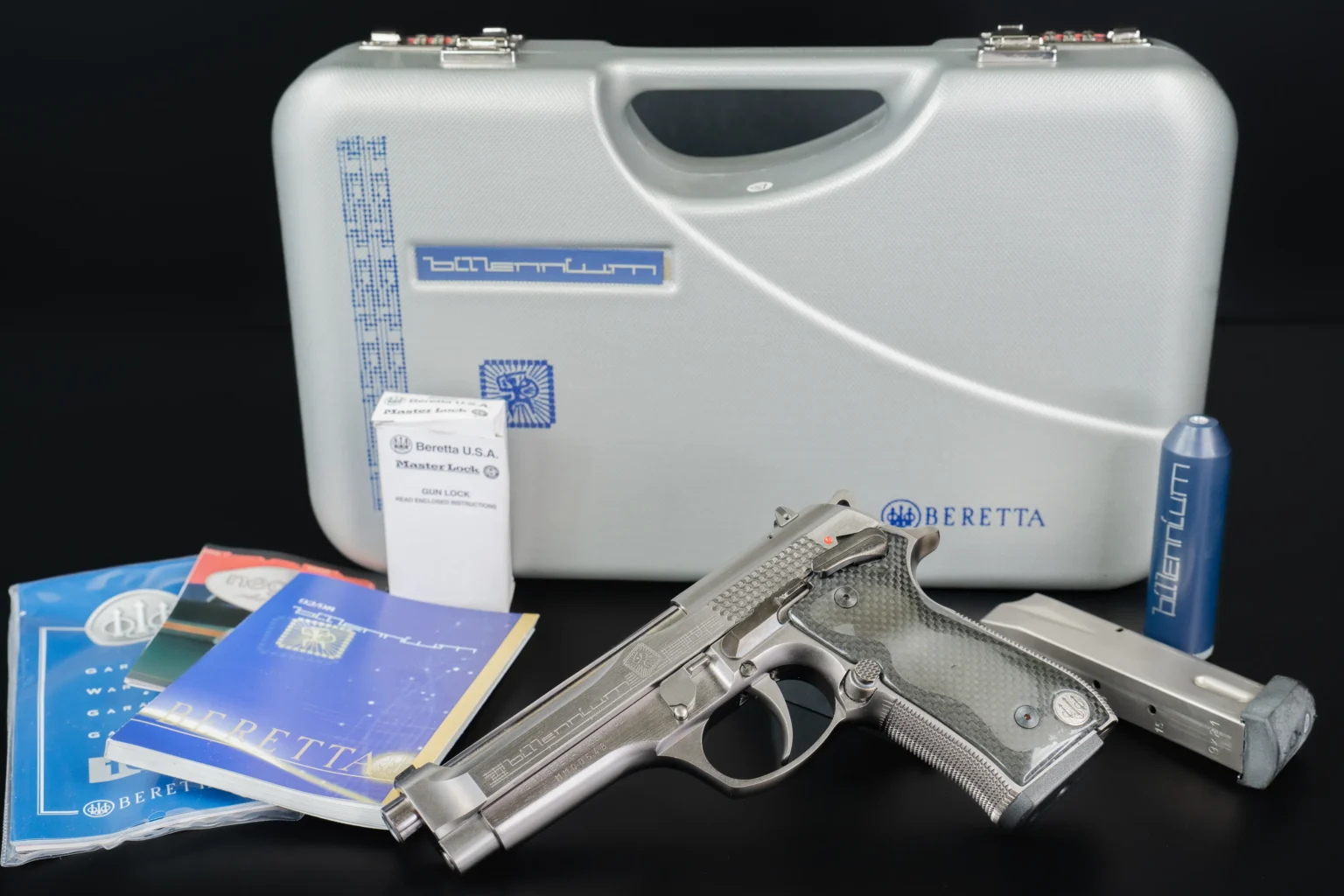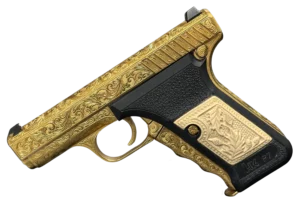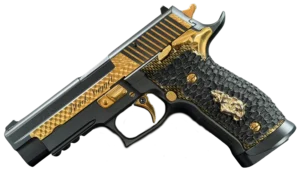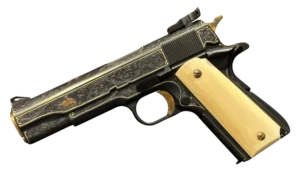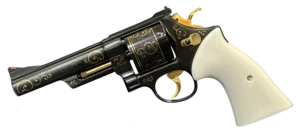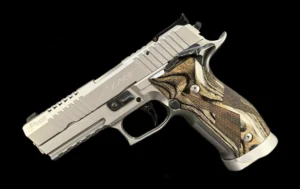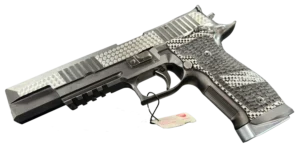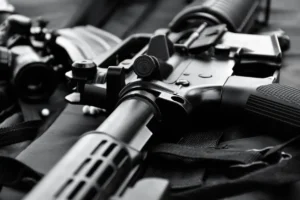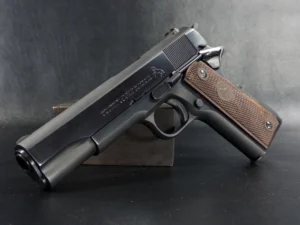Key Takeaways:
- Beretta isn’t just a brand — it’s a living, breathing legacy: From forging barrels in a 16th-century Italian forge to designing cutting-edge modular pistols, Beretta has stuck around for nearly 500 years by doing what most companies forget to do: evolve without losing their soul.
- Their guns are more than tools — they’re stories you can hold: Whether it’s a battle-worn Model 1915 or a hand-engraved SO6 EELL shotgun, every Beretta tells a story. History, craftsmanship, innovation — it’s all baked into the steel, wood, and tradition.
- Somehow, they’ve managed to balance old-world artistry with future-proof tech: You don’t usually find handcrafted beauty and carbon fiber living in the same sentence, but Beretta pulls it off. They’ve mastered the dance between past and future without falling into nostalgia or gimmicks.
Beretta. Even if you’re only casually into firearms, you’ve heard the name. It’s one of those brands that feels like it’s always been around—like steel and fire were just waiting for someone named Beretta to come along and do something incredible with them. And honestly? That’s not far off.
This isn’t just the story of a gun company. It’s a five-century-long saga of craftsmanship, survival, and serious Italian stubbornness. From hammering out barrels in a quiet northern village to arming armies and appearing in blockbuster movies—Beretta has been there, done that, and probably has the receipts in a dusty archive in Brescia.
So, yeah. Let’s take a walk through the centuries and unpack what makes Beretta more than just a name stamped on steel.
Chapter One: Humble Beginnings in Brescia
Picture this: It’s 1526. Europe’s a mess of empires, swords are still in style, and gunpowder is starting to change the game. In a little Italian town called Gardone Val Trompia, a guy named Maestro Bartolomeo Beretta is busy forging gun barrels by hand. That’s it—just barrels. No company yet. Just one man and his forge.
But these weren’t just any barrels. They were precise. Rugged. Reliable. So reliable that the Arsenal of Venice—one of the most powerful naval forces at the time—put in an order. That single contract kicked off a legacy that would span nearly 500 years. No corporate pitch decks, no logos, no hashtags—just quality steel and word-of-mouth.
And the Beretta family? They never let go. Through plagues, wars, revolutions, and whatever else history threw at Italy, they held the reins. Generations kept showing up to work, sleeves rolled, focused on one thing: making better firearms.
Wars, Empires, and a Growing Name
By the 1600s, Beretta had gone from the village forge to supplying weapons across Europe. Not in a flashy, conquer-the-world way—more like, “Hey, we make good stuff, and good stuff gets noticed.”
Then came the Model 1915. If you’ve never heard of it, think of it as Beretta’s “We’ve officially arrived” moment in the world of pistols. Compact, functional, and surprisingly modern-feeling for its time, it was designed during World War I and quickly found favor on the battlefield. Soldiers trusted it. Commanders ordered more of it. And Beretta started to shift from being a name known in Italy to a name known everywhere.
This wasn’t just about demand. It was about proving that even in the chaos of war, a well-designed weapon could still feel like a work of art.
That Logo You Know? Yeah, It’s Been Around a While
You’ve probably seen it before: that little trident-like logo—“PB” for Pietro Beretta. It’s elegant. Simple. But loaded with meaning.
Over the years, that logo has ended up on everything from sleek sporting shotguns to sidearms carried by police and military around the world. It’s become a shorthand for trust, for performance, for that hard-to-define quality that separates a great firearm from just an average one.
But here’s the thing: Beretta never got stuck in its own mythology. They kept moving.
The Iconic 92FS: How a Sidearm Became a Legend
Let’s talk about the 92FS for a second. If the Model 1915 was Beretta’s breakout role, the 92FS was its Oscar-winning performance.
This pistol became the U.S. military’s standard sidearm in 1985—rebadged as the M9. And it stayed in that role for over 30 years. That’s three decades of soldiers carrying Beretta steel into battle, into training, into who-knows-what.
Why did it catch on so hard? Simple: it worked. It was accurate. It was durable. It had that classic double-action/single-action setup that shooters either love or pretend not to love but secretly do.
It also looked good on screen. Hollywood loved it. If you’ve seen an action movie from the late ’80s or ’90s, odds are someone was running a 92FS. And not gently.
From Battlefield to Boutique: The Shotguns That Stop Time
Here’s where things get a little poetic.
Beretta doesn’t just do pistols. Their shotguns—especially the over-under SO6 EELL—are masterpieces. Not “gun nerd” masterpieces. I mean legit, jaw-dropping, handcrafted pieces of art.
These guns are engraved by hand. The wood is polished like a violin. They’re the kind of pieces you don’t just shoot—you show. And when you do shoot them, it’s smooth. Like, “this is what clouds must feel like” smooth.
These aren’t mass-produced toys. They’re heirlooms. You hand one down, and 50 years later, your grandson’s friends are still jealous.
Innovation Hiding in Plain Sight
So how does a company that’s five centuries old stay relevant? Easy answer: It doesn’t stay still.
Beretta has quietly (and sometimes loudly) stayed at the bleeding edge of gun tech. We’re talking semi-automatics, polymer frames, modular builds, even smart gun features being tested for the future.
They’ve worked with military forces, competitive shooters, hunters, and just everyday folks to refine what works and toss what doesn’t.
They’ve embraced new materials—aluminum alloys, advanced coatings, space-age polymers. But even in all that high-tech wizardry, there’s always a nod to the old ways. A detail in the finish. A bevel on the grip. A sense that someone with actual hands made this.
The Two World Wars: Trial by Fire (Literally)
Beretta didn’t just survive the World Wars—they evolved through them.
In World War I, they supplied pistols. In World War II, they upped the ante—producing submachine guns, semi-autos, and whatever else Italy (and later, the occupying Germans) needed.
Some of it was messy. Wartime always is. But the guns? Still top-tier. The Model 38 submachine gun, for example, was so reliable that even after the war, it kept showing up in conflicts.
These periods forced Beretta to modernize. The old-school hand-forging gave way to precision machining, production lines, and efficiency. But the soul of the work—the pride in each part—never left.
The Collector’s Secret: Vintage Beretta Gold
You ever hold an old Beretta and just… feel something?
Collectors know. There’s a quiet confidence in these older pieces. The balance. The feel of the slide. The weight of the wood grip that’s seen a few too many summers.
Vintage Berettas aren’t just rare—they’re revered. They tell stories. Of wars. Of family traditions. Of being passed down, used hard, cleaned carefully, and stored with a reverence that’s hard to explain.
It’s not about resale value (though, let’s be real, they hold it well). It’s about that connection to something bigger. A history you can hold.
Present Day: Still Kicking. Still Innovating.
Today, Beretta’s global. Italy is still the heart of operations, but the company has arms (pun intended) in the U.S., Turkey, Finland, and beyond.
They’re in the competition scene, too. If you’ve ever watched Olympic skeet shooting or tuned into a 3-gun match, odds are someone’s racking a Beretta. That’s not luck—it’s legacy backed by results.
They’re also making bold moves with new tech. Think modular pistols. Think red-dot-ready slides. Think carbon fiber in places you didn’t know it made sense.
Yet somehow, through all the newness, you can still trace the DNA back to that barrel shop in 1526. That’s the magic of it.
What Keeps Them Going?
Here’s the question I kept asking myself while digging into all this: How does a company like Beretta—born when Michelangelo was still alive—still matter?
And I think it comes down to this: They care.
They care about the craft. About staying useful. About staying beautiful. About that weird balance where a gun can be a tool, a weapon, a work of art, and a slice of history all at once.
The Beretta Foundation even works to preserve this history. It’s not some marketing play—it’s a genuine attempt to keep alive the legacy of gunsmithing, Italian craftsmanship, and what it means to make something that lasts.
The Final Shot
Beretta isn’t perfect. No company is. But it’s real. It’s alive. It’s been showing up for nearly half a millennium, evolving and adapting without losing itself.
If you own one, you get it. If you’re thinking about owning one, well, just know you’re not buying a gun. You’re buying into a story that’s still being written.
And who knows? Maybe 500 years from now, someone will be telling your story—with a Beretta in hand.
Frequently Asked Questions
Beretta stands out due to its rich history spanning over 500 years, technological advancements, and continuous excellence in firearm manufacturing. It has contributed iconic models to both military and civilian firearms markets.
Beretta, established in 1526 in Gardone Val Trompia, Italy, is one of the oldest firearms manufacturers still in operation today.
Notable Beretta models include the Beretta 92 series used by military forces worldwide, the PX4 Storm for personal defense, and the A400 series shotguns favored by hunters and sports shooters.
Beretta has pioneered several innovations, including advanced modular designs, improved ergonomics, and polymer-framed pistols such as the PX4 series. It continues to innovate with technologies like OptimaBore barrels for improved accuracy in shotguns.


